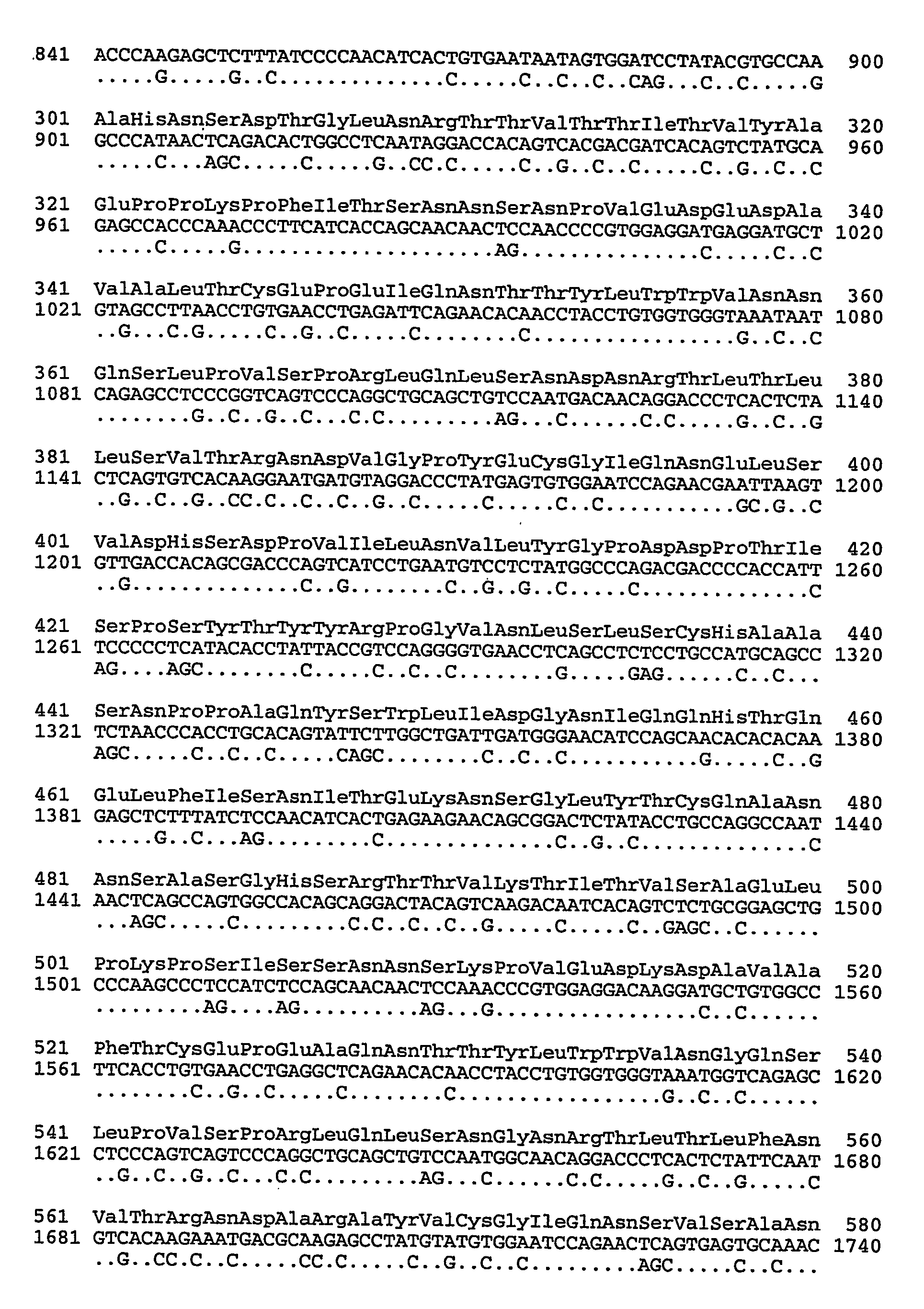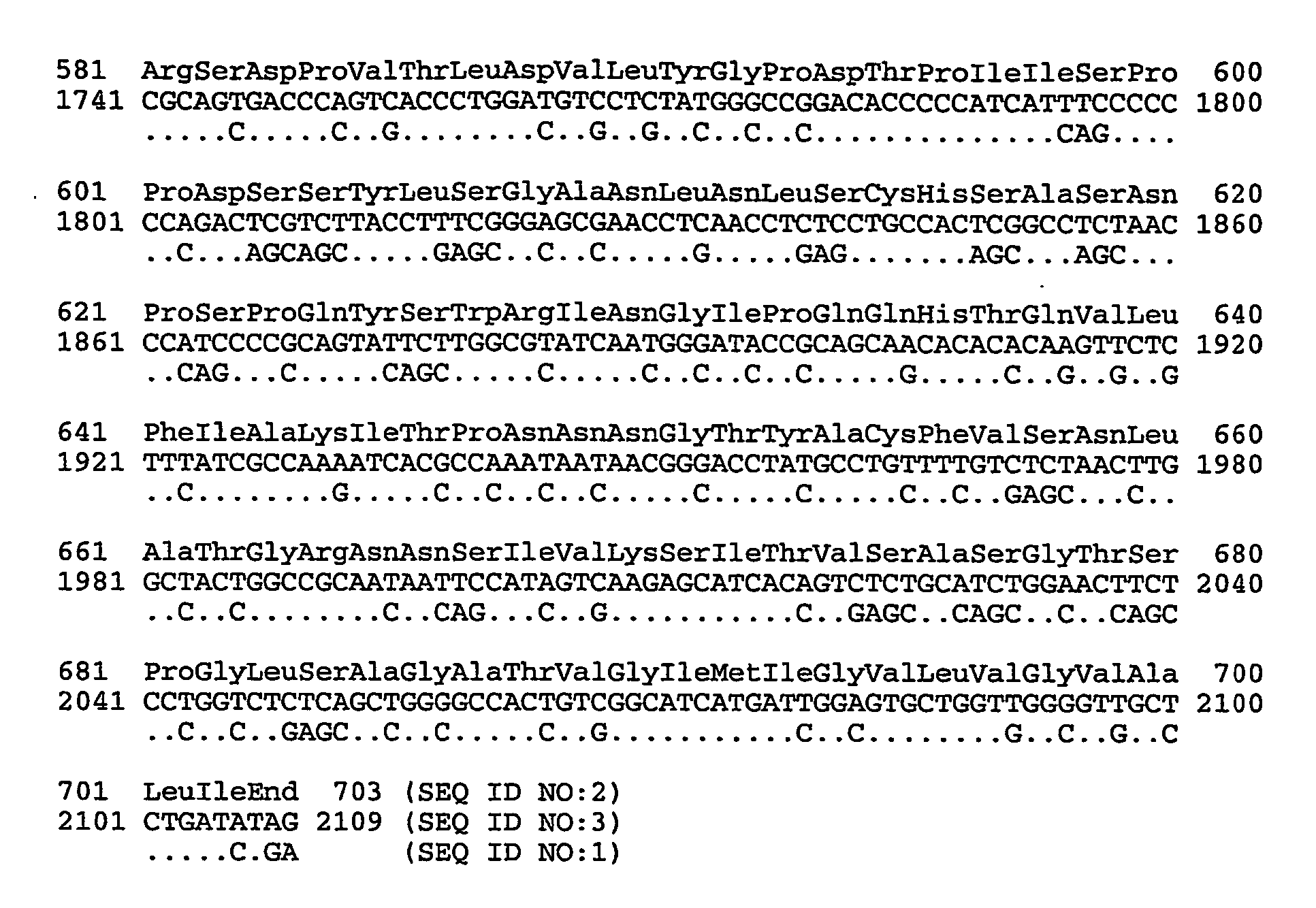Synthetic gene encoding human carcinoembryonic antigen and uses thereof
a carcinoembryonic antigen and synthetic gene technology, applied in the field of cancer treatment, can solve the problems of hindering the development and commercialization of many vaccines, and achieve the effect of convenient insertion, removal or replacemen
- Summary
- Abstract
- Description
- Claims
- Application Information
AI Technical Summary
Benefits of technology
Problems solved by technology
Method used
Image
Examples
example 1
Human CEA Optimized Codon Sequence
[0091] The entire hCEAopt coding sequence was synthesized and assembled by BIONEXUS (Oakland, Calif.). The hCEAopt cDNA, which carries an optimized Kozak sequence at its 5′-end, was constructed using oligonucleotides assembled by PCR. The assembled cDNA was inserted into the pCR-Blunt vector (Invitrogen, Carlsbad, Calif.), yielding pCR-hCEAopt. The integrity of the hCEAopt cDNA was determined by sequencing of both strands.
example 2
Plasmid Constructs and Adenovirus Vectors
[0092] pV1J / hCEAopt: Plasmid pCR-hCEAopt was digested with EcoRI for 1 hr at 37° C. The resulting 2156 bp insert was purified and cloned into the EcoRI site of plasmid pV1JnsB (Montgomery, et al., DNA Cell Biol., 12(9):777-83(1993)).
[0093] pV1J / hCEA: Plasmid pCI / hCEA (Song et al. Regulation of T-helper-1 versus T-helper-2 activity and enhancement of tumour immunity by combined DNA-based vaccination and nonviral cytokine gene transfer. Gene Therapy 7: 481-492 (2000)) was digested with EcoRI. The resulting 2109 bp insert was cloned into the EcoRI site of plasmid pV1JnsA (Montgomery et al., supra).
[0094] Ad5 / hCEAopt: Plasmid pCR-hCEAopt was digested with EcoRI. The resulting 2156 bp insert was purified and cloned into the EcoRI of the polyMRK-Ad5 shuttle plasmid (See Emini et al., WO 02 / 22080, which is hereby incorporated by reference).
[0095] Ad5 / CEA: The shuttle plasmid pMRK-hCEA for generation of Ad5 vector was obtained by digesting plasmi...
example 3
CEA Expression and Detection
[0096] Expression of hCEA by the plasmid and Ad vectors was monitored by Western blot analysis. Plasmids were transfected in HeLa cells or PerC.6 cells with Lipofectamine 2000 (Life Technologies, Carlsbad, Calif.). Adenovirus infections of PerC.6 cells were performed in serum free medium for 30 min at 37° C., then fresh medium was added. After 48 hr incubation, whole cell lysates and culture supernatant were harvested The CEA protein present in the cell lysates was detected by Western blot analysis using a rabbit polyclonal antiserum. The protein was detected as a 180-200 kDa band. The secreted CEA was detected in the cell supernatants and in peripheral blood of injected mice (3 days post injection) using the Direct Elisa CEA Kit (DBC-Diagnostics Biochem Canada Inc., Ontario, Canada).
PUM
 Login to View More
Login to View More Abstract
Description
Claims
Application Information
 Login to View More
Login to View More - R&D
- Intellectual Property
- Life Sciences
- Materials
- Tech Scout
- Unparalleled Data Quality
- Higher Quality Content
- 60% Fewer Hallucinations
Browse by: Latest US Patents, China's latest patents, Technical Efficacy Thesaurus, Application Domain, Technology Topic, Popular Technical Reports.
© 2025 PatSnap. All rights reserved.Legal|Privacy policy|Modern Slavery Act Transparency Statement|Sitemap|About US| Contact US: help@patsnap.com



